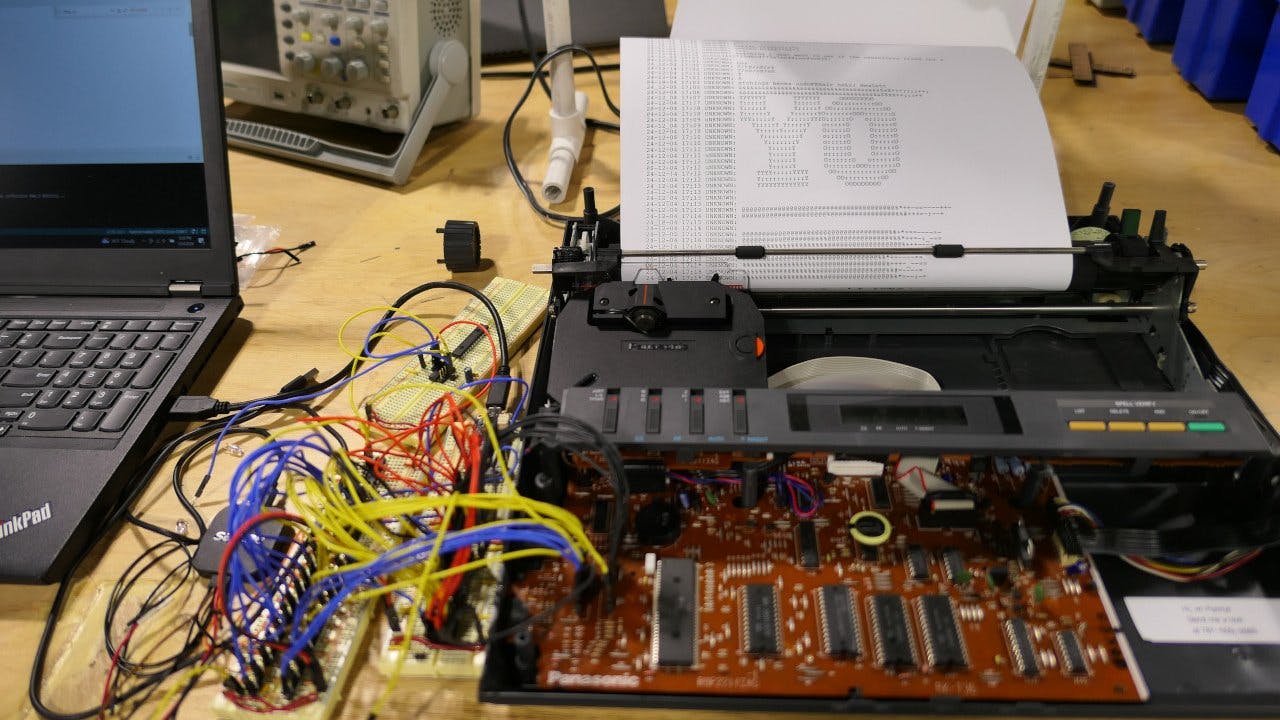Please ensure that JavaScript is enabled in your browser to view this page.
Sam Christy is an unusual individual. On the one hand, he is a very technically-savvy person that teaches robotics and engineering at a technical high school. On the other hand, he does not own a cell phone. This is quite a striking juxtaposition, given that we are long past the point where someone without a cell phone could be seen as anything other than a Luddite.
Of course there are many reasons one might want to avoid cell phones, despite the conveniences they offer. Avoiding calls in the middle of the night, or over the weekend, from an employer that has never heard of work-life balance, for example, could be a good reason. But imagine not even being able to receive a text message in this day and age. There must be some middle ground for those that want to stay connected while still being able to unplug from time to time.
For Christy, the compromise involved building a very unique gadget — a typewriter that can receive texts. While this device can receive SMS messages, it can hardly be expected to sit on one’s nightstand, or be carried everywhere in one’s pocket. It would seem to meet the criteria for connectivity without constant availability. Moreover, it gave this engineer a great excuse to dive into some cool vintage hardware and integrate some modern technology into it.
The Texting Typewriter is built around a mid-1980s Panasonic T36 electric typewriter that types out received SMS messages on paper. It does this by first leveraging Twilio, a cloud-based service that provides the typewriter with a virtual phone number to receive messages. When a message is sent to this number, Twilio uses webhooks to forward the message to an external URL associated with the typewriter. The externally accessible URL is created using a service called ngrok, which acts as a reverse proxy to securely connect Twilio to a local ESP32 microcontroller that controls the typewriter. The ngrok service runs on a Raspberry Pi on the local network.
The ESP32 acts as the central controller, running an asynchronous web server that processes incoming HTTP GET requests containing the SMS message data. When a message arrives, the ESP32 extracts the sender's phone number and the message content. It then checks the number against a local phone directory stored on the ESP32 using LittleFS, a lightweight file system, to match the number to a name.
Once the message and sender details are ready, the ESP32 sends commands to a custom circuit via an I2C interface. This circuit manages the typewriter's keyboard matrix by routing signals between its rows and columns. The circuit uses multiplexers and demultiplexers to select and transmit signals corresponding to the keys that need to be "pressed" to type the message. Special keys, such as SHIFT or CODE, are activated separately using a quad bilateral switch.
Finally, the typewriter prints the SMS message, including the sender's name and a timestamp, onto an "infinite" roll of paper. Not a bad way to stay connected without being too connected, huh? And perhaps more importantly, building a Texting Typewriter would be a great way to learn more about technology, both new and old.
Hackster.io, an Avnet Community © 2024
Scrolling Through Text Messages Just Got Physical – Hackster.io

